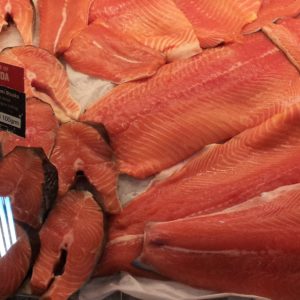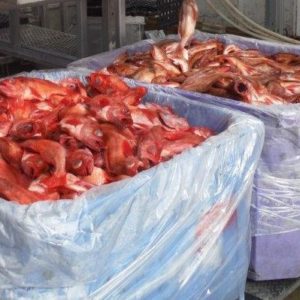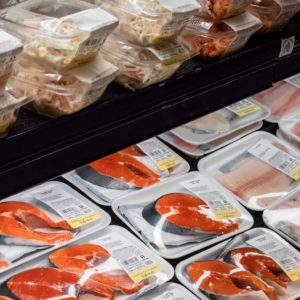DNA Testing
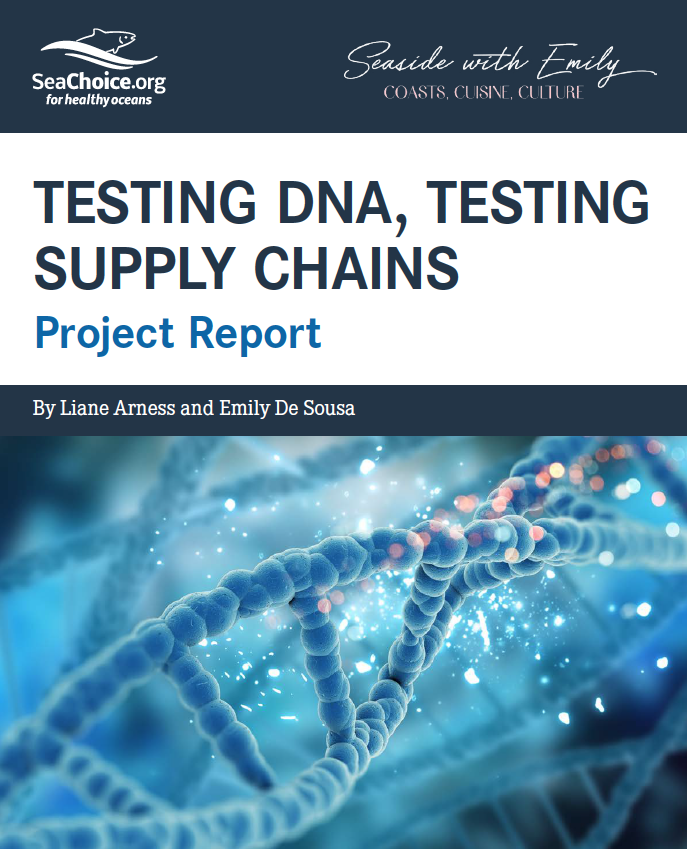 In summer 2021, SeaChoice partnered with Organic Ocean, Dr. Robert Hanner and Emily de Sousa to participate in a collaborative project to use DNA testing to verify species information in the seafood supply chain. We collected DNA samples from 36 Organic Ocean products and compared the results from the DNA barcoding process to the species information given by suppliers.
In summer 2021, SeaChoice partnered with Organic Ocean, Dr. Robert Hanner and Emily de Sousa to participate in a collaborative project to use DNA testing to verify species information in the seafood supply chain. We collected DNA samples from 36 Organic Ocean products and compared the results from the DNA barcoding process to the species information given by suppliers.
Click here to see the full report of what we found and here to read the Executive Summary.
SeaChoice worked with citizen scientists to collect DNA to support better seafood labelling
In 2017 and 2018, SeaChoice led citizen science research projects to document the quality and rigour of on-package seafood labels in Canadian retail stores. We found that the labels generally lack critical information to allow consumers to make informed purchases and that as many as 1 in 10 unique products were mislabelled, meaning they had a common name that does not match the Canadian government’s guidance for labelling seafood. Though lower than other published studies, this mislabelling rate scales up to a worrying amount of mislabelled seafood. Our plans to repeat the project in 2020 were waylaid due to the Covid-19 pandemic, but we hope to repeat sampling in 2022.
The study results
 After analyzing the results of our report Canadians Eating in the Dark: A Report Card of International Seafood Labelling Requirements, SeaChoice wanted to find out how well retailers across the country were labelling their seafood, despite Canada’s weak regulations. We also wanted to identify the DNA of seafood, to find out if retailers were accurately labelling seafood species according to Canadian regulations and associated guidance.
After analyzing the results of our report Canadians Eating in the Dark: A Report Card of International Seafood Labelling Requirements, SeaChoice wanted to find out how well retailers across the country were labelling their seafood, despite Canada’s weak regulations. We also wanted to identify the DNA of seafood, to find out if retailers were accurately labelling seafood species according to Canadian regulations and associated guidance.
So, in spring 2017, SeaChoice partnered with the University of Guelph Centre for Biodiversity Genomics’ LifeScanner program and engaged 300 volunteer citizen scientists across Canada. Each citizen scientist was provided with DNA collection vials to sample seafood in their local grocery stores, and asked to submit pictures of the seafood’s label.
In spring 2018, we again worked with LifeScanner and 81 volunteer citizen scientists to assess the quality and accuracy of retailers’ seafood labelling, turning the data into an index from which we can track improvements. Based on our 2017 results, we focused this next round of testing on major retailers and the most challenging products that are widely available in the Canadian marketplace (i.e. cod, sole, snapper/rockfish, wild salmon and farmed shrimp). Volunteers were again asked to provide DNA samples and photos of seafood labels.
2017 sampling
2018 sampling
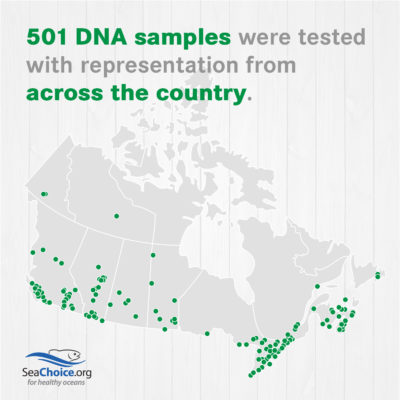
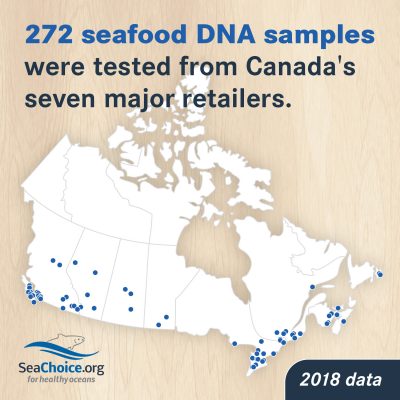
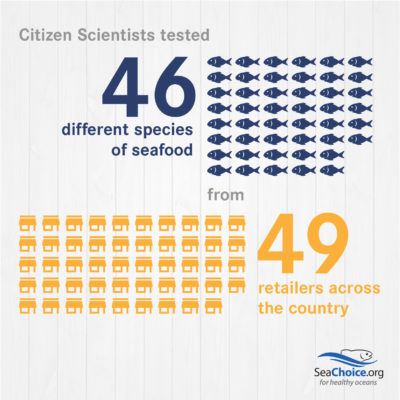
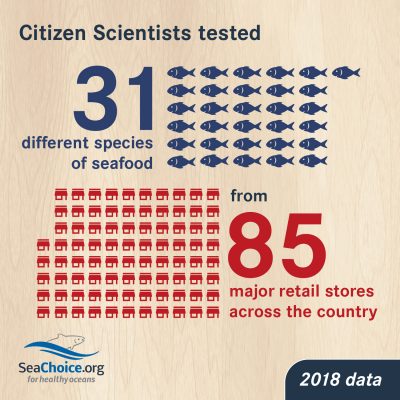
Results
The results showed that seven per cent of seafood tested in 2017 was mislabelled. In 2018, our results found nine per cent mislabelling among tested cod, sole, snapper/rockfish, wild salmon and farmed shrimp. Together these results suggest that almost 1 in 10 seafood products sold are mislabelled. This is a significant number considering that our 2018 study was focused on Canada’s major retailers who utilize large volume supply chains to source commodity seafoods such as cod and salmon.
Furthermore, although retailers are doing a relatively good job of telling Canadians whether their seafood is wild caught or farmed, we are eating in the dark when it comes to knowing the actual species, the country of harvest, and how the product was caught or farmed. Without this information, Canadians cannot assess the environmental sustainability of the seafood they buy.
2017 results
2018 results
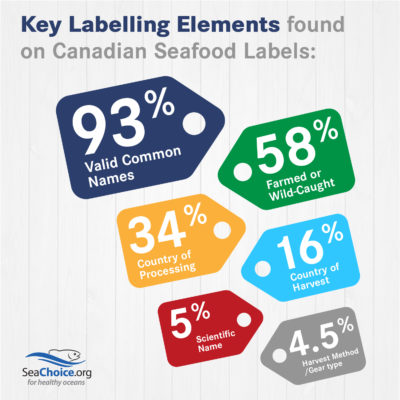
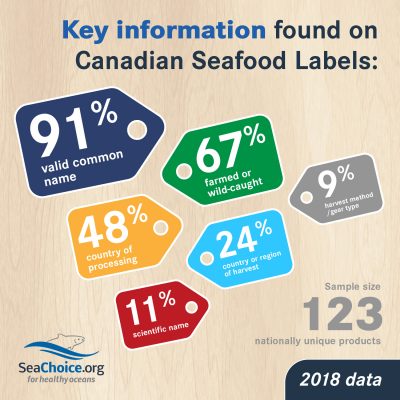
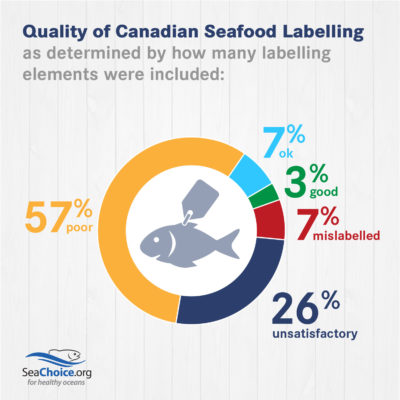
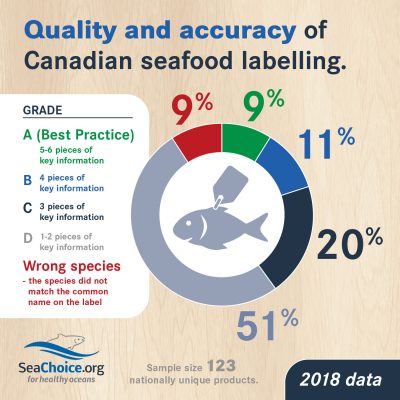
Next steps
SeaChoice has shared store-specific results with retailers, and we have followed up with the stores where mislabelling was found, to ensure it is rectified.
We are currently using the results from our surveys to advocate for legislative and voluntary improvements to seafood labelling in Canada’s retail sector and elsewhere in the supply chain. Learn more here.
Also, since our citizen scientists gathered a lot of data for us, we are undergoing a deeper analysis of our results, and plan to release a report of our findings in 2019.
Consumers can help by letting their retailers know they want better seafood labelling by speaking to them in store or by tweeting them and using the tag #SeafoodProgress. They can also find suggested tweets for each retailer on their Seafood Progress profile and message them that way.
Additional Resources:
LabelMySeafood.ca
Press release for 2017 results
LifeScanner portal for full 2017 and 2018 results
